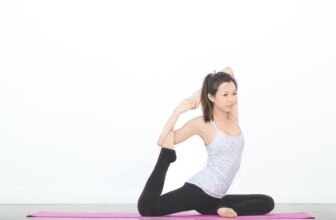Expressing Emotions: The Healing Power of Art Therapy
Art therapy embodies a transformative journey where creativity meets psychology, offering individuals a unique way to express emotions that might be difficult to articulate in words. This article will explore the myriad aspects of art therapy, its healing potential, various methods, common practices, and real-life examples to better understand its impact.
Table of Contents
- Understanding Art Therapy
- Historical Context
- Mechanisms of Healing
- Various Art Therapy Techniques
- Case Studies
- Addressing Common Questions
- Resources
- Conclusion and Future Trends
- Disclaimer
1. Understanding Art Therapy
Art therapy is a structured therapeutic approach that utilizes creative expression to promote mental health and emotional well-being. This practice integrates artistic mediums such as painting, drawing, sculpture, and collage into therapeutic processes. Art therapists often guide participants to create art in a safe, controlled environment.
What Makes Art Therapy Unique?
Unlike traditional talk therapy, art therapy allows clients to express feelings and thoughts visually, bypassing potential barriers that might hinder verbal communication. Art serves as a metaphor for experiences, facilitating insights and shifting perceptions in a profound and non-threatening manner.
2. Historical Context
Art therapy has evolved over decades, with its roots tracing back to the early 20th century. Initially, art was primarily used in asylums where patients were encouraged to create art as a means of self-expression.
Key Milestones:
- 1940s-1950s: Post-World War II, art therapy began formal recognition, particularly in the UK and the US.
- 1969: The American Art Therapy Association was founded, marking a significant turning point in the professionalization of the field.
- 1970s-Present: The integration of various psychological theories, such as Jungian psychology and humanistic approaches, refined art therapy’s methods and practices.
3. Mechanisms of Healing
Art therapy operates on several psychological mechanisms that facilitate healing:
3.1. Emotional Release
Creating art enables individuals to express profound emotions that may be too painful or complex to verbalize. This emotional release can alleviate symptoms of anxiety, depression, and trauma.
3.2. Nonverbal Communication
For individuals struggling with verbal expression, art provides an alternative form of communication that transcends language barriers.
3.3. Self-Discovery and Insight
Engaging in art allows clients to explore their inner selves, generate insights, and gain awareness of their emotions and behaviors, often leading to personal growth.
3.4. Enhanced Problem-Solving Skills
Creating art requires a level of creativity that can translate into improved problem-solving abilities in everyday life.
4. Various Art Therapy Techniques
Art therapy encompasses a wide range of techniques tailored to different needs and contexts. Here are some of the most commonly used techniques:
4.1. Drawing and Painting
Participants may be asked to create images that symbolize their feelings, experiences, or future aspirations.
4.2. Collage
Using pre-existing images from magazines or other materials allows clients to create a story or narrative in a tangible form.
4.3. Sculpture
Three-dimensional art can be more tactile and engaging, providing a different level of expression.
4.4. Art Journaling
Combining writing and art facilitates deeper exploration of thoughts and feelings in a portable format.
4.5. Guided Imagery and Visualizations
Art therapists may use meditation or guided imagery to help clients visualize and create art from a place of calm and safe space.
5. Case Studies
Case Study 1: Children with Trauma
A group of children affected by natural disasters engaged in art therapy sessions where they created drawings depicting their experiences. The sessions allowed them to articulate their fears and grief, ultimately leading to improved emotional regulation and resilience.
Case Study 2: Veterans with PTSD
Art therapy facilitated the expression of complex emotions for veterans suffering from PTSD. Through sculpting and painting, they were able to communicate their trauma and begin the process of healing and reconnection with their families.
6. Addressing Common Questions
Q&A
Q: What qualifications do art therapists need?
A: Art therapists typically hold a master’s degree in art therapy or a related field and are often licensed or certified by professional organizations.
Q: Can anyone participate in art therapy?
A: Yes, art therapy can be beneficial for individuals of all ages and backgrounds, regardless of artistic skill level.
Q: How long do art therapy sessions last?
A: Sessions can vary in length but typically last from 45 to 90 minutes.
Q: Is art therapy a substitute for traditional therapy?
A: Art therapy can complement traditional therapy but should not replace it, especially in cases of severe mental illness.
Q: What are some potential outcomes of art therapy?
A: Participants may experience reduced anxiety, improved self-esteem, enhanced emotional expression, and greater insight into their feelings.
7. Resources
| Source | Description | Link |
|---|---|---|
| American Art Therapy Association | Offers resources and information on art therapy practices and research. | Link |
| National Institute of Mental Health | Provides comprehensive information on mental health disorders and treatment options. | Link |
| The Creative Arts Therapist | A journal dedicated to exploring the intersection of therapy and creative arts. | Link |
| Art Therapy Credentials Board | Governing body for art therapy credentialing and professional standards. | Link |
| The National Endowment for the Arts | Supports arts programs and research in mental health. | Link |
8. Conclusion and Future Trends
In summary, art therapy represents a powerful modality for healing and self-expression. As a therapeutic practice, it is increasingly gaining recognition and respect within the mental health community.
Future Trends:
- Integration with Technology: The rise of teletherapy and digital art tools allows for accessible art therapy options, broadening its reach.
- Diverse Populations: The application of art therapy to diverse and underserved populations is expected to expand, recognizing unique cultural and individual needs.
- Research and Evidence-Based Practices: Continued research will help solidify the effectiveness of art therapy, paving the way for further integration into clinical settings.
By recognizing the potential of art therapy, we can harness its transformative powers, enriching our understanding of mental health and improving therapeutic outcomes for individuals across various communities.
Disclaimer
This article is intended for informational purposes only and does not constitute professional medical advice. Always consult with qualified healthcare providers for personalized medical advice and treatment. The experiences and outcomes discussed in this article are not guaranteed and may vary from person to person.










